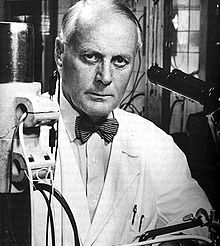The Whale, The Torpedo And Cruelty To Animals Part 3
The Age of Electrophysiology
“The history of electrophysiology has been decided by the history of electrical recording instruments”
Edgar Douglas Adrian
per Stanley Finger Edgar D. Adrian: Coding in the Nervous System
DOI:10.1093/acprof:oso/9780195181821.003.0015
1771 - Luigi Galvani
Alessandro Volta
Michael Faraday
Jacques Arsène d'Arsonval
vision
Gabriel Lippman
1887 - Augustus Desiré Waller (18 July 1856 – 11 March 1922)
Waller created the first electrocardiogram. He recorded the heart’s electrical activity as a trace. He was not the first to use electrical apparatus to observe the rythm of the beating heart, but he was the first to record it. His invention was the first in a line of inventions leading to the electrocardiograph, the defibrillator and the pacemaker.
img
Neil Armstrong's electrogardiogram
img
img
Jimmy with electrodes
img
Cruelty to animals
Jorge Reynolds Pombo
Inventor of the first external artificial pacemaker with internal electrodes. His university studies were conducted at Trinity College, Cambridge, England, where he graduated as an electrical engineer. Athletes studied by telemetry electrocardiography. It started with the design and construction of a transmitter and receiver electro cardiogram (ECG) telemetry in 1971. In 1999 he designed a pacemaker for the prevention of thrombosis in tourist class passengers, with the help of Jorge Ulloa A. and Jorge Hernan Ulloa.
It is currently developing studies for the design of a "nanomarcapaso" with the help of the scientist Jorge Leon Galindo and a multidisciplinary team of specialists. In August 2011, announced the launch of a pacemaker as small as one-third of a grain of rice and does not need battery. Such pacemakers may be seen by cardiologists "from anywhere in the world", as said in the IV Hall of Inventors and High Technology in Medellin.
Ragnar Granit
image courtesy Wikipedia.
Ragnar Arthur Granit (October 30, 1900 – March 12, 1991) was a Finnish born scientist.
Granit further pursued the physiological basis of colour perception. According to his research results, some nerve fibres of the eye are not particularly selective in the case of colour. On the contrary, they react in the same way over the whole spectrum. In contrast, other fibres clearly distinguish between colours. In 1937 Granit published these research results, thus confirming the theory of colour perception put forward in his own day by Hermann von Helmholtz (1821-1894).
Together with another physiologist from Helsinki, Gunnar Svaetichin, Granit observed that the electric impulses generated in the retina, the so-called electroretinogram, showed that sensitivity to colour is concentrated mainly in three different groups in the area of blue, green and red. This provided the first biological demonstration in support of the Young-Hemholz three-colour theory.


